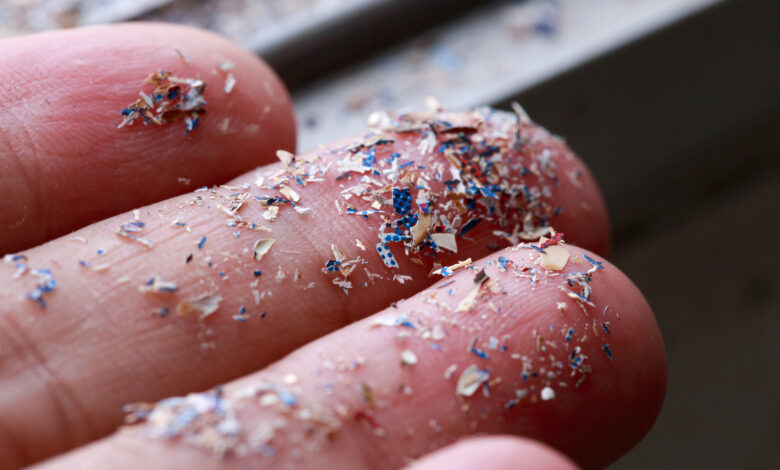
What are microplastics?
Microplastics are minuscule plastic particles, measuring from microscopic granules to 5mm in diameter. These diminutive particles stem from human-made, petroleum-based plastics that degrade over time.
Primary sources of microplastics
Microplastics can infiltrate the environment through various channels, including:
- Fragmentation of larger plastic items such as bottles, bags, and packaging material. When these items begin to break down they shed microplastics.
- Industrial processes, where plastic particles are used as abrasives or as components in production processes.
- Personal care products like toothpaste and exfoliating scrubs that contain plastic microbeads.
- Synthetic textiles, which release microfibers during washing. Over 1/3 of all microplastics originate from textiles such as synthetic fleece.
- Car tire wear, which emits tiny plastic particles onto road surfaces that wash into waterways.
Impact on the environment & human health
Microplastics pose significant risks to both the environment and human health.
Environmental impact
- Pollution: Microplastics persist in the environment for hundreds of years, contributing to soil and water pollution. They are now found in nearly every ecosystem, from deep in the oceans to the tops of the highest mountains, and even in farmers’ fields.
- Marine life: Aquatic organisms frequently consume microplastics, sometimes mistaking them for food or encountering them in contaminated water where they live. This ingestion can lead to physical harm, block digestive tracts, and introduce toxic chemicals into the food chain. Most wild ocean fish have some degree of microplastic contamination.
Human health impact
- Ingestion: Humans can ingest microplastics through industrial processes, contaminated water, food, and even air. Once these particles are consumed, they can remain in the human body indefinitely.
- Health risks: While research on the dangers of microplastics on human health is ongoing, potential health risks linked to plastic additives may include inflammation, exposure to harmful chemicals, and disruption of endocrine functions, all arising from their complex compositions.
Microplastics pose an increasingly urgent concern due to their extensive implications for both the environment and human health. Their persistence and widespread presence underscore the importance of addressing plastic pollution now, more than ever. By gaining a clearer understanding of what microplastics are, their sources, and their effects on our lives, we can take proactive measures to reduce their prevalence in our world.



